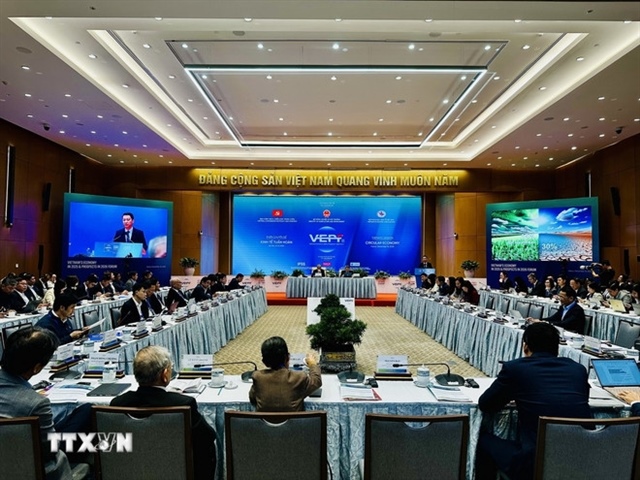The process of screening economic groups kicks off
The process of screening economic groups kicks off
The dissolution of the two economic groups VNIC and HUD is believed to mark the anticipated failure of the model of state owned economic groups.

The Vietnam Infrastructure Development and Construction Corporation (VNIC) and the Vietnam Housing and Urban Development Holdings (HUD) do not exist any longer after a decision by the Prime Minister on October 2.
Seven years ago, the Vietnam Coal and Mineral Industries Group (Vinacomin) became the first state owned economic group after it was established on October 26, 2005. Thirteen such economic groups have been established so far, which were expected to become the powerful conglomerates, or “Vietnamese chaebols.”
And now, with the Prime Minister’s decision, the number of state owned economic group has reduced to 11, while only 5-6 economic groups would exist in the future, which means that 7-8 more would return to their original status, i.e. they would be put under the management of ministries.
With the ambitious plans of becoming multi-field conglomerates, they have been trying to jump into different business fields in the national economy, injecting money in real estate, insurance companies and making financial investments.
As a result, tens of trillions of dong invested by the economic groups have been swept away in the economic crisis.
The Electricity of Vietnam EVN reportedly incurred the loss of 8400 billion dong in 2010 and saw the total assets down by 7790 billion dong.
A report showed that by September 2011, the outstanding loans provided to state owned economic groups had reached 218,738 billion dong, accounting for 8.76 percent of the total outstanding loans of the banking system, and 52.66 percent of the state owned enterprises’ bank loans.
The national oil and gas group PetroVietnam is the biggest borrower with 72,300 billion dong, followed by EVN with 62,800 billion dong and Vinacomin with 20,500 billion dong. The Vietnam Shipbuilding Industry Group (Vinashin) ranks the fourth with the outstanding loans of 19,600 billion dong.
A Ministry of Finance’s report has shown the bad financial situation of many economic groups which are facing the risk of financial imbalance.
The actual situation of Vinashin was uncovered in 2010 with the unpaid debts of up to trillions of dong. At that time, the Vietnam National Shipping Lines (Vinalines) was asked to take on a part of Vinashin’s assets – a part of the plan to help revive Vinashin, which was on the verge of bankruptcy.
However, Vinalines’ situation itself was also very serious with the total debt discovered by the government inspectors reaching 36 trillion dong. In 2010 alone, the shipping corporation incurred the loss of 1300 billion dong.
One of the biggest wrongdoings conducted by Vinashin was that the group bought ships too old, thus causing the loss worth tens of billions of dong. And the same problem was discovered at Vinalines. The corporation bought 17 ships old more than 15 years which cannot meet the requirements to be able to register in Vietnam.
Vu Duc Dam, Minister, Chair of the Government Office in early October informed that the government would only retain the most important economic groups operating in the fields which play important roles in the national economy, including energy, oil and gas and telecommunication.
PetroVietnam (Oil and gas), EVN (power), Petrolimex (petroleum distributor) and VNPT (post and telecommunication) would continue existing.
EVN is taking loss, but power is a very important field in the national economy and national defense.
Economic groups now hold 30 percent of the total assets, 51 percent of the total stockholder equity and use 40 percent of the total labor force of state owned enterprises.
A recent report shows that state owned enterprises have to spend 13 dong to obtain one dong of growth, while the proportion is 0.5 for the private economic sector.
vietnamnet
























